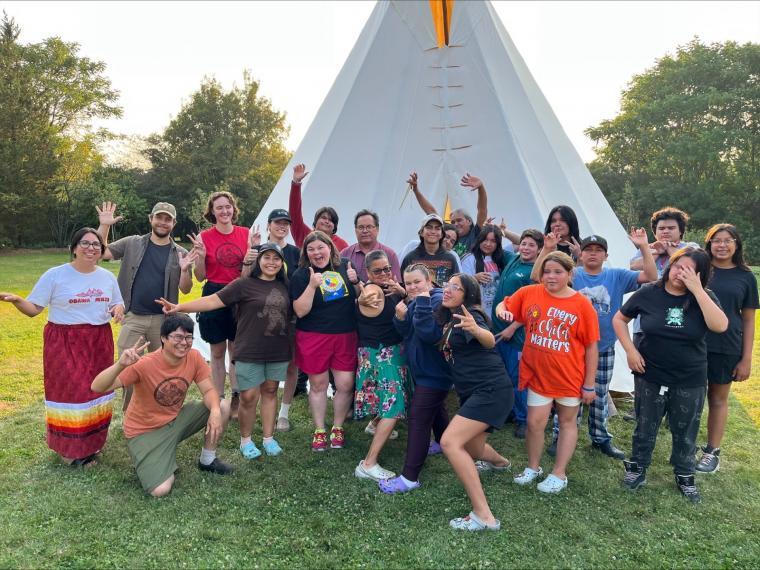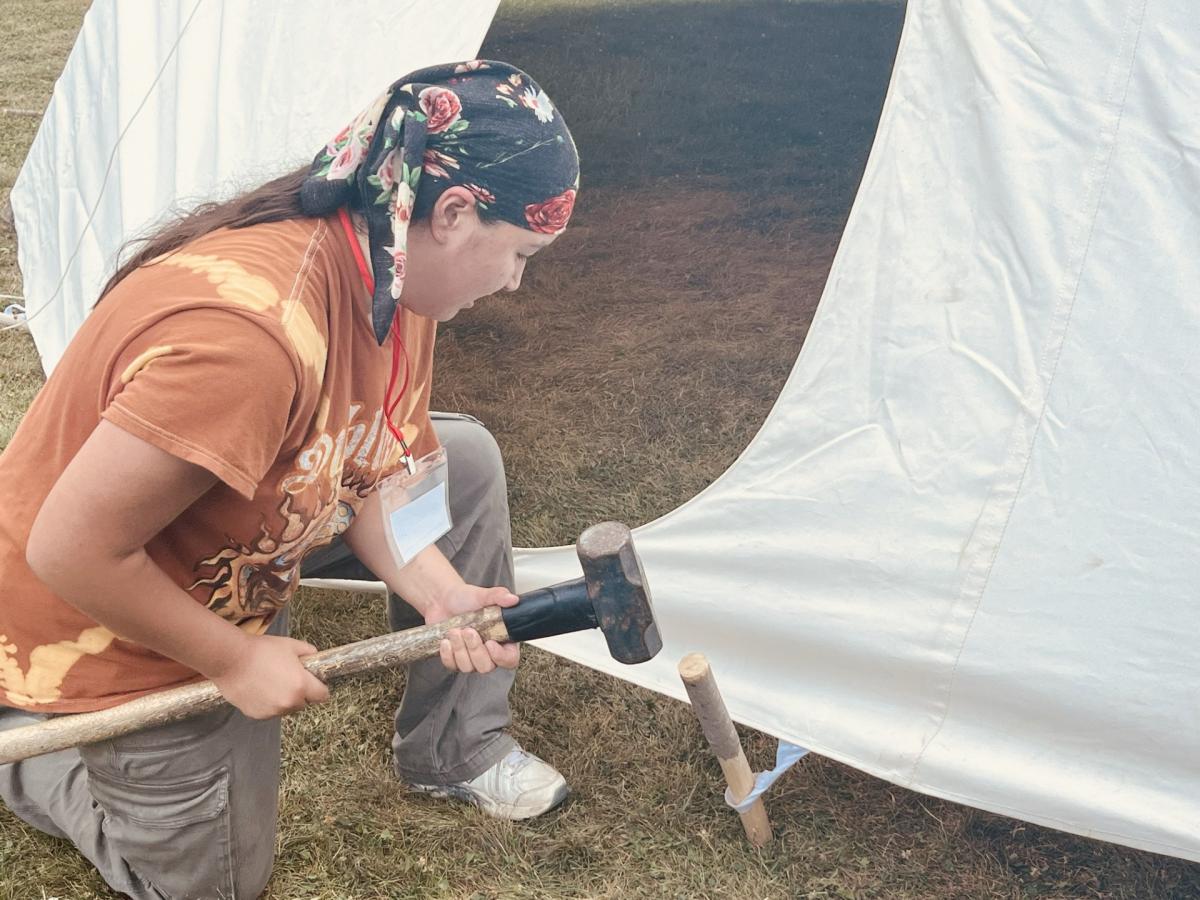
The University of Guelph deepened its role as a leader in Indigenous environmental science and knowledge last week, welcoming Indigenous youth from several First Nations to campus for an immersive week of land-based learning, knowledge exchange, and environmental science exploration.
Hosted at the University’s 400-acre Arboretum [1], the Indigenous Youth Exchange was a vibrant cultural and educational exchange that had future leaders, U of G students and faculty, community partners, and Elders from Wiikwemkoong Unceded Territory and Magnetawan First Nation connect on campus.
The participants engaged in a rich blend of activities including guided nature walks to traditional teachings shared around a sacred fire designed to inspire future careers in environmental stewardship. They stayed in campus residences, shared meals, and experienced both campus energy and the natural learning landscape of The Arboretum.
The exchange is a collaboration of the Wildlife, Indigenous Science, Ecology (WISE) Lab and the entomology-focused Young Lab at the University of Guelph, led by Dr. Jesse Popp [2] and Dr. Andrew Young [3] along with support from U of G Indigenous Initiatives and The Arboretum team. The event reflects years of relationship-building between U of G researchers and Indigenous communities.
“The Mtigwaaki Youth Camp offers a way to foster good relationships with the Land and each other, while raising awareness about the importance of embracing multiple ways of knowing in academia and beyond,” says Dr. Popp. “It’s about honouring Indigenous knowledge while also sharing scientific tools that can support community priorities.”

Central to the exchange is the University’s Bachelor of Indigenous Environmental Science and Practice (BIESP) program [4]—one of the only degrees in Canada to braid Indigenous and Western environmental knowledge in an integrated, respectful, and practice-based way. Students in BIESP explore this collaborative approach to environmental science, braiding Western environmental science with Indigenous knowledge and learnings.
Dr. Young notes that the event mirrors the teaching philosophy embedded in the program.
“I use the Arboretum as an outdoor classroom throughout my undergraduate courses” says Dr. Young. “This collaborative work gets students out on the land and appreciating all of their relations in the environment.”
At the heart of the week-long camps is a tipi and sacred fire, where storytelling, reflection, and community-building take place daily. Activities also include exploring the Mtigwaaki Trail and discovering the diverse plant and animal life that call the Arboretum home.
“We’ve been planning for this for a long time and involved months of hard work from Wiikwemkoong and Magnetawan community members, students in the Young and Wise labs, and Arboretum staff,” says Dr. Young.
For Justine Richardson, Arboretum Director, the exchange embodies the University’s commitment to reconciliation through education.
“This is a unique opportunity to weave together different perspectives and ways of knowing,” says Richardson. “It’s essential to the Arboretum’s role and to U of G’s commitment to supporting Indigenous-led conservation.”
The Indigenous Youth Exchange is part of the Shkagamik Kwe Zaagaajik initiative (translated as Those that Love Mother Earth), a larger initiative that combines research, land-based learning, and community engagement. By creating space for youth to connect with both cultural teachings and scientific knowledge, the University hopes to inspire the next generation of leaders in environmental stewardship.